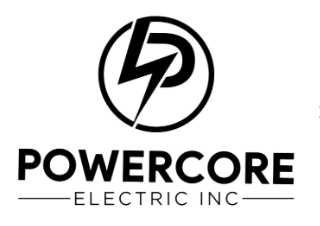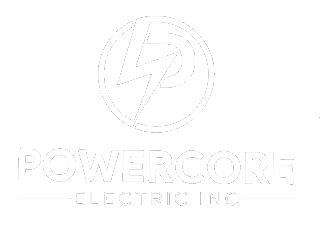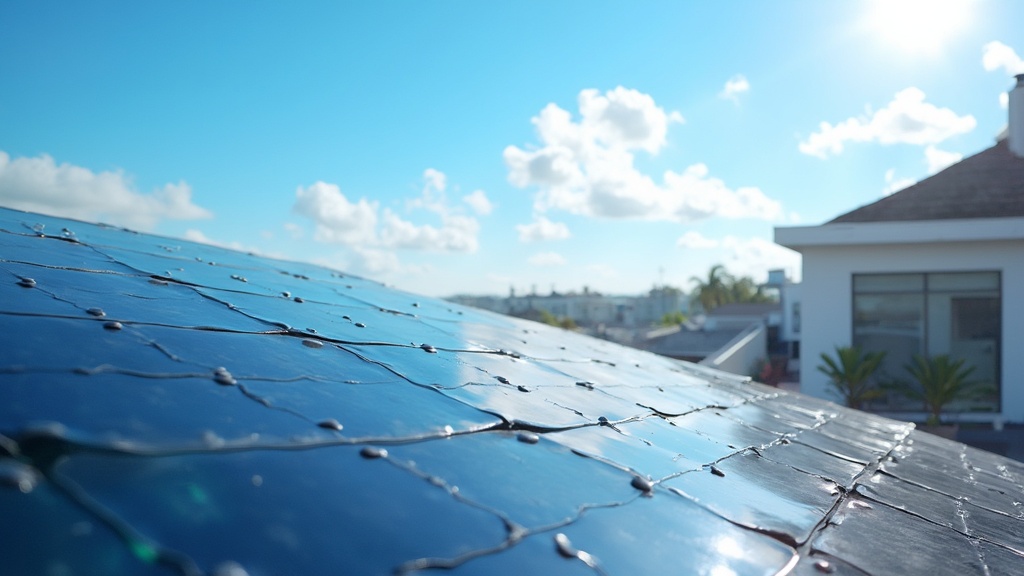Introduction
As homeowners increasingly seek sustainable solutions that blend functionality with style, solar roofing tiles have emerged as a game-changer in the world of eco-friendly living. These innovative tiles not only harness the power of the sun to generate electricity but also elevate the aesthetic appeal of any home. Unlike traditional solar panels that sit atop roofs, solar tiles integrate seamlessly into the roof structure, offering a sleek, modern look while significantly reducing energy costs.
From understanding the different types of solar tiles to exploring the installation process and maintenance tips, this article serves as a comprehensive guide for homeowners eager to embrace renewable energy. With the growing demand for sustainable living, solar roofing tiles present an attractive investment that promises both environmental benefits and long-term savings.
Understanding Solar Roofing Tiles: Definition and Functionality
Solar panel roofing tiles embody an impressive combination of conventional roofing substances and advanced energy technology, created especially for the environmentally aware homeowner. These creative panels capture sunlight and transform it into electricity, effectively energizing your residence while greatly lowering carbon emissions. Unlike traditional photovoltaic panels, which are placed on top of existing roofs, solar panel roofing tiles are seamlessly integrated into the roof structure itself, providing a sleek and visually appealing alternative.
This integration not only enhances the overall aesthetic of your home but also supports significant energy savings. With solar panel roofing tiles, you can enjoy the benefits of an attractive exterior along with reduced utility expenses, making eco-friendly living a fashionable option. Additionally, water heaters that can heat water to temperatures as high as 400 degrees Fahrenheit provide significant long-term benefits, including enhancing property value and appealing to eco-conscious buyers.
Many regions offer financial incentives or rebates for the installation of these systems, making them an attractive investment. As the market for solar panel roofing tiles is anticipated to expand at a CAGR of 15.2% during the forecast period 2024-2031, the rising acceptance and demand for these solar panel roofing tiles are clear. Furthermore, advancements in photovoltaic roofing technology, such as solar panel roofing tiles with improved efficiency and integration with energy storage systems, further enhance their appeal.
By selecting renewable energy options for your residence, you are not only investing in your property but also contributing to a greener future.
Exploring Different Types of Solar Roofing Tiles
When it pertains to roofing systems that utilize solar panel roofing tiles, you’ll discover two primary varieties to think about: photovoltaic (PV) panels and thermal panels. PV panels perform their function by transforming sunlight into electricity, ideal for supplying power to your home, with a levelised cost of power ranging from 0.06 to 0.12 €/kWh, which is 30–40% lower than comparable PV-only systems. On the other hand, thermal tiles are designed to capture heat, making them ideal for water heating systems.
Numerous case studies highlight how these technologies have positively impacted homeowners. For example, households in Southern California have observed utility costs decrease by over 70% with the incorporation of water heating systems, and these systems can diminish carbon emissions by as much as 40%. Leading brands like Tesla Solar Roof and CertainTeed are making waves in the market with their stylish solar panel roofing tiles that seamlessly integrate with traditional roofing materials.
As emphasized by renewable power specialists, low initial expenses and beneficial incentives are the most effective methods to make heating and cooling systems financially appealing. Furthermore, passive power collection designs, such as large south-facing windows, have shown effectiveness in cooler areas, illustrating how climate can affect the efficiency of heat collectors. Combining thermal heaters with heat exchangers can further improve residential heating efficiency, enabling even greater power savings.
As you explore your options, it’s essential to weigh factors like efficiency, cost, and warranty. A case study on the techno-economic performance of photovoltaic-powered air-conditioning heat pumps illustrates the efficiency and cost-effectiveness of different configurations, particularly noting the advantages of variable-speed systems. This thoughtful evaluation will assist you in selecting the best energy solution that not only meets your energy needs but also complements your home’s aesthetic while contributing significantly to sustainability efforts.
Begin reducing your utility expenses today by exploring heating solutions that match your sustainability objectives!
Step-by-Step Guide to Installing Solar Roofing Tiles
- Preparation and Planning: Begin by assessing your roof’s structure and angle, as these factors significantly influence the performance of roofing tiles. Verify that your roof is suitable for solar panel roofing tiles installation and understand local building regulations to prevent any compliance problems. Taking these preliminary steps will set a solid foundation for your project. The installation of photovoltaic roof shingles typically takes one to two days, so plan accordingly.
- Gather Materials: Before diving in, gather all necessary tools and materials. This includes photovoltaic shingles, underlayment, flashing, and fasteners. Having everything on hand will streamline your installation process and keep things organized.
- Install Underlayment: Lay down the underlayment as a protective barrier against moisture. This is crucial for ensuring the longevity of your roof and the efficiency of your solar panel roofing tiles.
- Place Solar Panels: Begin the installation from the base of the roof and progress upward, fastening each panel according to the manufacturer’s guidelines. This method helps prevent water infiltration and ensures a snug fit.
- Connect Wiring: Once the panels are in position, link them to the inverter and your residence’s electrical system. This step is essential for utilizing the power produced by your panels effectively. Solar panel roofing tiles work by converting sunlight into electricity through photovoltaic cells, which generate direct current (DC) that is then converted to alternating current (AC) by the inverter for use in your home. Consider the best practices for selecting panel inverters to ensure optimal performance and compatibility with your storage solutions.
- Energy Storage Solutions: To maximize the benefits of your solar installation, consider integrating a solar battery system. These batteries store excess power generated during the day for use at night or during power outages. Optimal battery choices can vary based on your energy needs, so it’s essential to evaluate options like lithium-ion batteries for their efficiency and longevity.
- Final Inspections: After installation, conduct thorough inspections to check for any leaks or loose materials. If you feel uncertain at any point in the process, don’t hesitate to consider hiring a professional. Samantha Velez, a content editor at Angi, advises,
It always pays to shop around and get at least three quotes for your project,
which can provide you with a range of options and peace of mind. Additionally, while shingle installations can reach up to $75,000, costs can be reduced by integrating shingles with regular ones, taking advantage of incentives, and hiring professionals for installation. Furthermore, Tesla offers a 25-year warranty covering both the materials and their power output for the Solar Roof, providing long-term assurance that the roof will generate electricity and maintain its appearance. By investing in renewable technology, not only do you safeguard your residence, but you also aid in sustainable living while enjoying considerable savings on power.
The Benefits of Solar Roofing Tiles: Energy Efficiency and Aesthetics
Solar panel roofing tiles offer an array of benefits that make them an appealing choice for eco-conscious homeowners. Not only do they significantly reduce your carbon footprint, but they also help you save money on utility bills by generating your own electricity. In fact, residences fitted with photovoltaic systems have experienced an average yearly increase of 32% in installations since 2005, indicating a significant movement toward energy autonomy.
The affordability of photovoltaic technology has evolved over time, making it more accessible and often cheaper than conventional electric bills. Beyond financial savings, using solar panel roofing tiles can enhance your home’s aesthetic appeal. Offered in different designs and shades, solar panel roofing tiles can effortlessly blend with your current roof, delivering a stylish and contemporary look that boosts curb appeal.
Moreover, a pertinent quotation from a sector specialist highlights the significance of renewable power:
“Investing in solar technology not only benefits the environment but also significantly boosts property value and energy independence.”
With photovoltaic materials, you’re not only investing in energy efficiency but also potentially enhancing your home’s worth. Many homeowners have reported increased property values after installing renewable roofing, thanks to the growing consumer demand for sustainable features.
Additionally, it’s noteworthy that 90-97% of the materials from decommissioned solar panel roofing tiles can be recycled or sold, highlighting the environmental benefits of roofing tiles. To maximize the efficiency of your photovoltaic panels, regular cleaning is essential, as dirt and debris can significantly reduce energy production. Moreover, understanding how these panels function—converting sunlight into electricity through photovoltaic cells—can help you appreciate their value even more.
As you think about making the switch, remember that photovoltaic technology has become more affordable and efficient, with prices decreasing by over 70% since 2010. Explore the advantages of Tesla home chargers, which can offer convenient charging solutions for electric vehicles, and consider government programs that can further enhance your energy experience and savings. With these advancements, transitioning to renewable energy is not just a smart financial decision but also a commitment to an eco-friendly lifestyle that can provide long-term benefits for you and the planet.
Essential Maintenance Tips for Solar Roofing Tiles
- Routine Assessments: Inspecting your photovoltaic panels at least twice annually is crucial, particularly following storms or extreme weather. Look out for any debris, damage, or signs of wear and tear. Early detection can save you from costly repairs down the line.
- Cleaning solar panel roofing tiles is crucial for maximizing sunlight absorption and ensuring efficiency. A simple rinse with a hose or a gentle scrub with a soft brush can do wonders, but it’s important to avoid harsh chemicals that could damage your tiles. As one expert observed, “Did you notice a significant drop in production? This issue can be attributed to several factors, with the most prevalent being dust and debris accumulation. Remember, a clean surface not only improves production but also supports a more sustainable home environment.
Professional Maintenance: Consider scheduling a professional inspection every few years. Experienced contractors can provide an in-depth assessment, ensuring all components function correctly. As Trust Roofing aptly states,
For renewable enthusiasts and conscientious homeowners alike, GAF shingles provide a pathway to a more sustainable future, proving that you can indeed have it all—efficiency, aesthetics, and environmental stewardship.
This highlights the importance of maintaining both function and aesthetic appeal. Given that the labor costs for photovoltaic shingle installation average about $21,000, proper maintenance is a significant investment that should not be overlooked.
Monitor Performance: Implement monitoring systems to keep an eye on your energy production. These tools can assist you in identifying issues early, ensuring that your energy system operates at peak efficiency. By staying proactive, you can maintain optimal performance and enjoy long-term financial benefits, including significant reductions in electricity bills—potentially saving you hundreds annually. Additionally, be aware that shingle costs can vary significantly by location; homeowners in California, for example, may face higher installation expenses due to regional variations. This real-world perspective can help you better plan your investment and maintenance strategies.
- Understanding Complexity: Installing and maintaining energy shingles can be complex, often requiring experienced contractors and potential roof replacements. Being informed about these challenges helps you prepare for the process and ensures you choose the right professionals for the job. Furthermore, researchers from the Indian Institute of Engineering Science and Technology have developed a model to estimate dust accumulation on photovoltaic panels, which is crucial for optimizing maintenance. By prioritizing regular maintenance, you can enhance the longevity and efficiency of your solar panel roofing tiles while contributing to a cleaner, more sustainable future.
Conclusion
Solar roofing tiles are not just a stylish addition to any home; they represent a significant step towards sustainable living. By integrating solar technology into roofing materials, homeowners can enjoy a beautiful exterior while harnessing the sun’s energy to power their homes. The benefits are clear:
- Reduced energy costs
- Lower carbon emissions
- An increase in property value
With advancements in technology and a growing market, now is the perfect time to consider this eco-friendly investment.
Understanding the different types of solar roofing tiles, such as photovoltaic and solar thermal options, allows homeowners to make informed decisions based on their specific energy needs. The step-by-step installation guide provides a clear pathway for those looking to embark on this journey, ensuring a smooth transition to renewable energy. Regular maintenance is essential to maximize efficiency and longevity, making it crucial to stay vigilant and proactive in caring for these innovative systems.
Ultimately, solar roofing tiles offer a unique blend of functionality and aesthetics, making them an appealing choice for eco-conscious homeowners. Embracing this technology not only leads to significant savings on utility bills but also contributes to a more sustainable future for everyone. Investing in solar roofing tiles is more than just a home improvement; it’s a commitment to environmental stewardship and energy independence that can benefit both homeowners and the planet for years to come.


